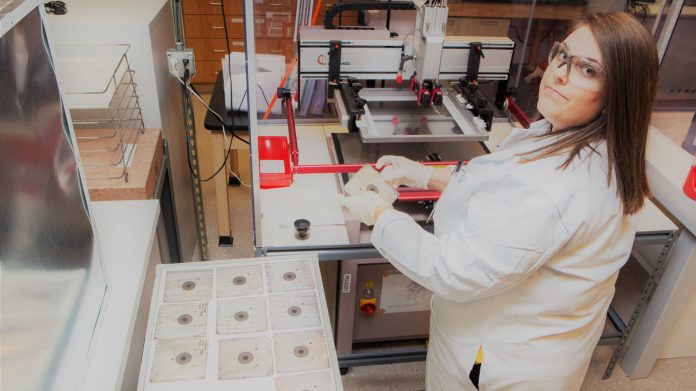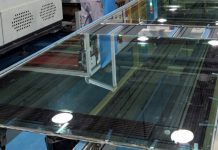
A joint UNSW-University of Queensland project is expected to result in the development of ultra-thin, flexible screen-printed batteries for cheap portable devices and intermittent renewable energy.
Backed by the energy innovator and philanthropist Trevor St Baker, the project is aiming to further develop technology by battery energy storage firm Printed Energy and bring it to market.
The $12 million project is also supported with a $2 million grant from the Cooperative Research Centres Projects scheme that will allow the partners – including Sunset Power International and Sonovia Holdings – to accelerate the technology.
Printed Energy’s solid state batteries are a thin, flexible format – printed in a roll-to-roll process like a newspaper – that can be adapted to almost any shape.
The company’s CEO Rodger Whitby said the technology has potential applications in powering everything from disposable medical devices, smart cards and wearable electronics to large-scale solar panels and energy storage.
“The highly innovative and unique nature of this technology makes it ideal for powering sensors, devices for the Internet or Things, disposable healthcare devices and eventually, even for large-scale application to help manage the intermittent nature of electricity generated by solar panels,” Mr Whitby said.
UNSW’s Dean of Engineering, Mr Mark Hoffman, agrees with this notion.
“Storage has been the missing piece of the puzzle when it comes to renewable energy,” he said.
“The world is crying out for storage solutions, and this partnership has the potential to deliver on that urgent need. What’s exciting is that this technology also has immediate applications in wearables and small-scale devices.”
Chris Greig, director of University of Queensland’s Dow Centre for Sustainable Engineering Innovation and the UQ Energy Initiative, is equally excited about the potential.
“Australia has seen a decline in manufacturing industries in recent decades. This technology represents not just an opportunity for us to be involved in cutting-edge science and innovation but presents a real opportunity for the next generation of Australian manufacturing,” he added.
“Our mission is to foster and facilitate advances in science and engineering which are technologically, economically and socially sustainable. This project fits the bill perfectly and the range of applications is probably only limited by our imaginations.”
According to the project partners, first applications of the technology will be in small-scale devices, with development work in large-scale uses to be explored over the next three years, relying on Printed Energy’s proprietary designs.
The research effort will be coordinated by UQ’s Dow Centre, with UQ’s Lianzhou Wang and UNSW’s Da-Wei Wang driving the development.



















